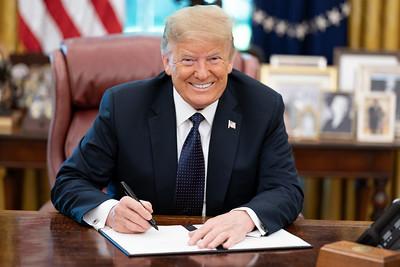When marble-sized hail struck Alabama in 2023, it left a lasting imprint on the community of Camp Hill, where a significant portion of the population lives in poverty. Devastation ensued: roofs were torn apart, vehicles were ruined, and many homes were left vulnerable without insurance for repairs. The town was eagerly anticipating $20 million in federal aid derived from a climate-focused law enacted during the Biden presidency. However, that funding is now frozen due to President Trump's recent directive to halt all federal spending related to climate initiatives.
Though the White House recently moved to withdraw an extensive mandate that threatened a sweeping stop to trillions of federal grants, a specific emergency executive order remains in place. This ensures that tens of billions intended for energy and environmental projects are still in limbo, leaving federal agencies puzzled and construction timelines stalled.
Warren Tidwell, director of the Alabama Center for Rural Organizing and Systemic Solutions, has expressed concern for residents reliant on these funds for repairs. He highlighted the plight of an elderly woman living alone whose deteriorating roof could potentially leave her homeless if not addressed quickly.
On his first day in office, President Trump enacted an executive order aimed at dismantling what he referred to as the “Green New Deal,” a sweeping descriptor for various climate policies instituted by the previous administration. His order called for a freeze on any funding associated with the Inflation Reduction Act and a bipartisan infrastructure law which collectively allocated vast resources to renewable energy projects, electric vehicles, and other green technology initiatives.
As this funding freeze grips numerous state and local governments, it threatens to halt critical projects that support both economic stability and community resilience, particularly in areas hit hardest by recent climate events. The repercussions of this pause extend beyond constructions and funding delays—they pose a real risk to human lives and livelihoods.
Though the White House recently moved to withdraw an extensive mandate that threatened a sweeping stop to trillions of federal grants, a specific emergency executive order remains in place. This ensures that tens of billions intended for energy and environmental projects are still in limbo, leaving federal agencies puzzled and construction timelines stalled.
Warren Tidwell, director of the Alabama Center for Rural Organizing and Systemic Solutions, has expressed concern for residents reliant on these funds for repairs. He highlighted the plight of an elderly woman living alone whose deteriorating roof could potentially leave her homeless if not addressed quickly.
On his first day in office, President Trump enacted an executive order aimed at dismantling what he referred to as the “Green New Deal,” a sweeping descriptor for various climate policies instituted by the previous administration. His order called for a freeze on any funding associated with the Inflation Reduction Act and a bipartisan infrastructure law which collectively allocated vast resources to renewable energy projects, electric vehicles, and other green technology initiatives.
As this funding freeze grips numerous state and local governments, it threatens to halt critical projects that support both economic stability and community resilience, particularly in areas hit hardest by recent climate events. The repercussions of this pause extend beyond constructions and funding delays—they pose a real risk to human lives and livelihoods.























